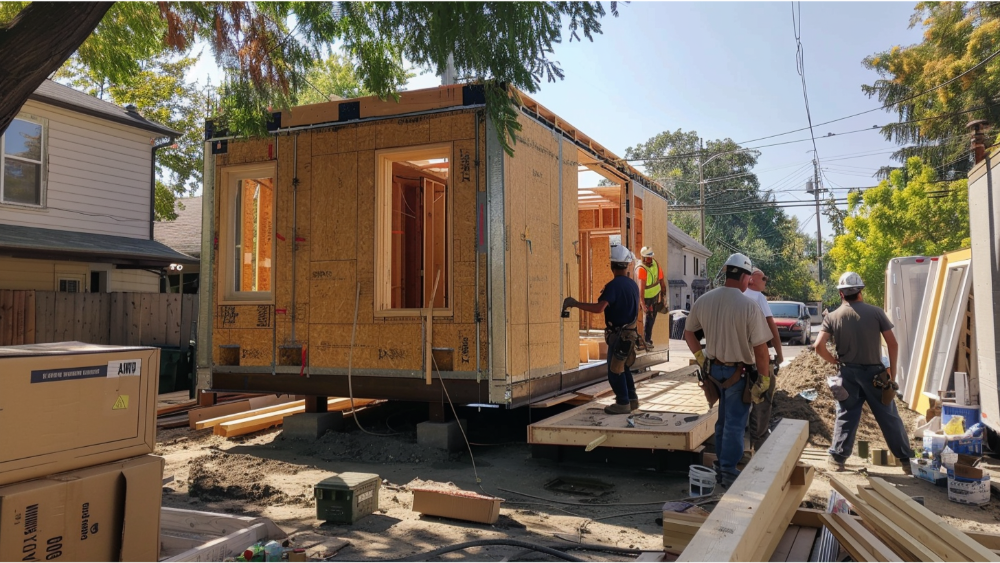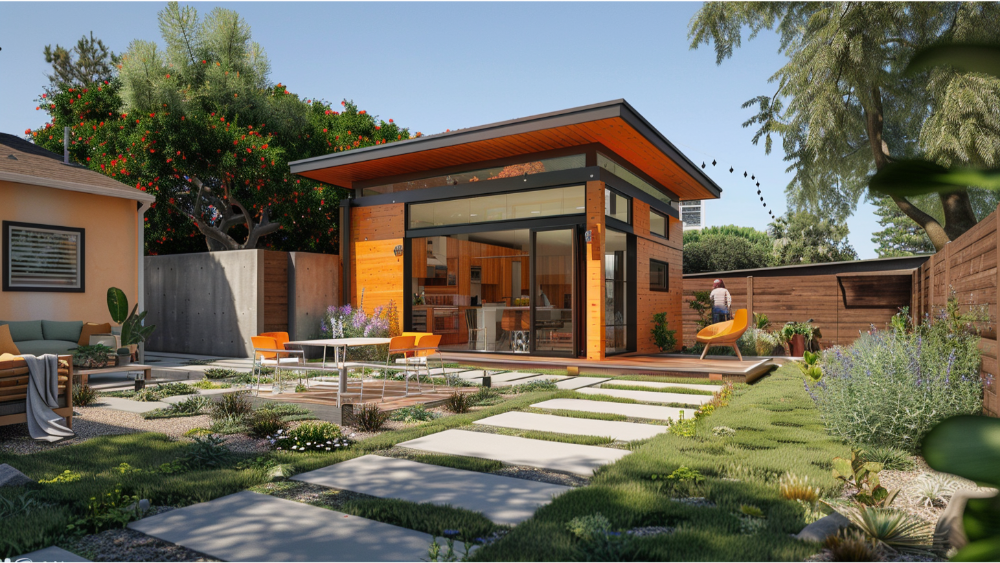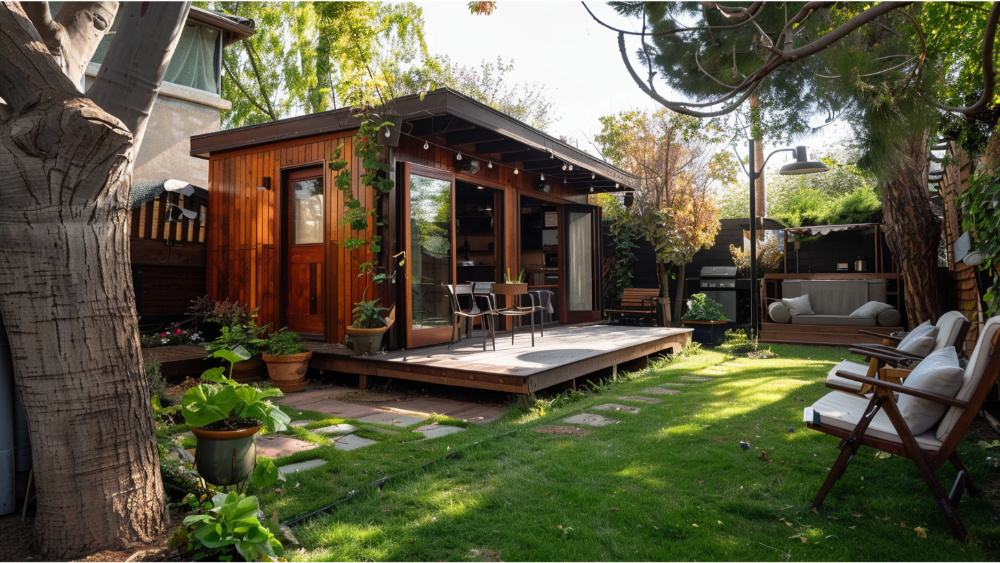
ADU for Aging Parents
Aging is an inevitable process that we all have to go through. As our parents grow older, it becomes our responsibility to take care of them and ensure their well-being. However, as much as we want to provide the best care for them, it can also bring about various challenges and difficulties. This is where ADU (Accessory Dwelling Units) comes into play.
ADUs are additional housing units constructed on current residential properties. They can take the shape of a backyard cottage, garage conversion, or basement apartment. These compact living spaces enable aging parents to reside close to family while preserving their independence and privacy.
Benefits of ADU for Aging Parents

One of the biggest advantages of ADUs for aging parents is the close proximity to their loved ones. This allows them to have easy access to family members in case of emergencies or just for regular visits.
A granny flat or ADU offers aging parents a sense of independence and privacy by providing them with a separate living space rather than an "in-law suite." This allows them to retain a degree of autonomy while remaining close to their family.
With the increasing costs of nursing home facilities, accessory dwelling units (ADUs) provide a cost-effective option for elderly parents on a fixed income. They can bypass pricey assisted living centers and instead reside on their own property or with family.
Aging parents frequently experience feelings of isolation and loneliness, particularly when living alone. Accessory dwelling units (ADUs) provide them with greater opportunities for social interaction with family. These units enable elderly parents to "age in place," allowing them to remain in their homes and communities while still receiving care and support from caregivers or their adult children.
Things to Consider Before Building an ADU
Before deciding to build an ADU for your aging parents, there are a few things that need to be considered depending on where you live, there may be zoning laws and building codes that need to be followed when constructing an ADU. It is important to research and understand these regulations before starting the building process.
While ADUs can be a more affordable housing option compared to an assisted living facility, there are still costs associated with building and maintaining them. It is important to carefully consider the financial implications before making a decision.
When designing an ADU for aging parents, it is important to keep their needs in mind. This includes features like wheelchair accessibility, grab bars, and non-slip flooring for safety.
What is the Base Construction Cost to Build an ADU?

The construction costs of building an ADU project can vary greatly based on several factors, including size, location, and the materials used. For instance, a study by HomeAdvisor reveals that the national average cost for constructing a 600-square-foot ADU typically falls between $150,000 and $300,000. However, costs can vary widely.
For example, a DIY garage conversion can be completed for as low as $10,000 , appealing to budget-conscious homeowners looking to maximize their property value. On the other end of the spectrum, a custom-built unit with high-end finishes and features can exceed $200,000.
Additional considerations, such as local laws, permits, labor costs, and utility connections, can also significantly impact the overall budget. It's essential for homeowners to plan carefully and consider their long-term goals when investing in an ADU.
Average cost for Adu in Northern California
Based on data, the average cost for an ADU in Northern California ranges between $200,000 and $400,000. If you live more south like Los Angeles county, prices should be the same. However, costs can vary depending on factors such as size and materials used.
Despite potential costs and regulations, building an ADU can provide a valuable housing solution for aging parents while also offering benefits to homeowners in terms of property value and caregiver support. By carefully researching and understanding local laws and regulations, homeowners can successfully navigate the process of building an ADU for their loved ones. In addition, with financial assistance available in some areas and potential rental income opportunities, an ADU can offer a cost-effective solution for multigenerational living.
Design Choices for ADU

Single-story design: A single-story ADU is ideal for aging parents as it eliminates the need to climb stairs, making it more accessible and reducing the risk of falls.
Wide doorways and hallways: To accommodate wheelchairs or walkers, ensure that doorways and hallways are wide enough. This also allows easier movement throughout the space.
Grab bars and handrails: These safety features should be installed in areas such as bathrooms, stairways, and near exits to assist with mobility.
ADU and Property Taxes
One concern that many homeowners have when considering building an ADU is the impact it may have on their property taxes. In most cases, adding an ADU will not significantly increase property taxes as they are considered to be part of the existing property.
However, it is important to check with your local tax assessor's office to confirm any potential changes in property taxes before building an ADU. Some areas also have tax exemptions or reductions for ADUs built specifically for aging parents.
Caregiver Support with an ADU

Having an ADU for aging parents can also provide support and assistance for caregivers. Caregivers often face physical, emotional, and financial strain while taking care of their loved ones. With an ADU, they can have a separate living space and some level of independence while still being able to provide care for their aging parents. This arrangement fosters a healthier relationship, allowing both generations to thrive.
Does an ADU Increase Property Value?
Adding an ADU to your property can potentially increase property values. It provides additional living space and can attract potential buyers looking for multigenerational housing options. However, it is important to keep in mind that the actual impact on property value may vary depending on factors such as location and market demand. Overall, investing in an ADU can be a smart move for homeowners seeking to enhance their property's appeal.
Get Acquainted with County Rules
Before building an Accessory Dwelling Unit (ADU), it is essential to thoroughly familiarize yourself with local zoning laws and zoning restrictions, as these can significantly impact your project. Key factors to consider typically include size restrictions, which dictate the maximum square footage allowed, and specific parking requirements that may mandate a certain number of parking spaces based on the number of bedrooms in the ADU.
Additionally, you will need to obtain necessary permits, which often involve submitting detailed plans and undergoing inspections throughout the build process. Ignoring or misunderstanding these regulations can lead to significant legal issues, including fines or the potential requirement to demolish the structure, so it's crucial to conduct thorough research and possibly consult with local officials or a zoning attorney to ensure compliance.
Frequently Asked ADU for Aging Parents Questions

Can I rent out the ADU to someone else besides my aging parents?
Yes, ADUs can be rented out to others as a source of additional income. However, it is important to check with local regulations and zoning laws before doing so.
Do I need a separate entrance for the ADU?
In most cases, having a separate entrance for the ADU is recommended to maintain privacy and independence for both the main house and the secondary unit.
Is there financial assistance available for building an ADU for aging parents?
Some states offer financial assistance or tax incentives for building ADUs specifically for aging or disabled family members. It is important to
Conclusion

Building an ADU for aging parents can provide a practical and cost-effective solution for multigenerational living. By carefully researching local laws and regulations, considering design choices to accommodate accessibility, and understanding potential impacts on property taxes, homeowners can successfully navigate the process of building an ADU.
Furthermore, an ADU can offer support for caregivers while potentially increasing property value. Overall, with careful planning and consideration of long-term goals, an ADU can be a valuable addition to a home for both aging parents and homeowners alike. So, if you are looking to enhance your family’s lifestyle or simply add some extra space in your home without breaking the bank , consider building an ADU for your aging parents. It not only benefits your loved ones, but it can also be a sound financial investment for you in the long run.




